Following on from Eating in Japan – Osaka, we travelled to Koyasan (Mt Koya) to stay overnight at a temple on the mountain. Accommodation was more expensive than the other places we stayed in during our time in Japan, but an overnight stay was highly recommended by friends as well as online reviews. We enjoyed our stay at the Eko-In, especially as it had a kotatsu (a coffee table with blankets and a heater underneath!).
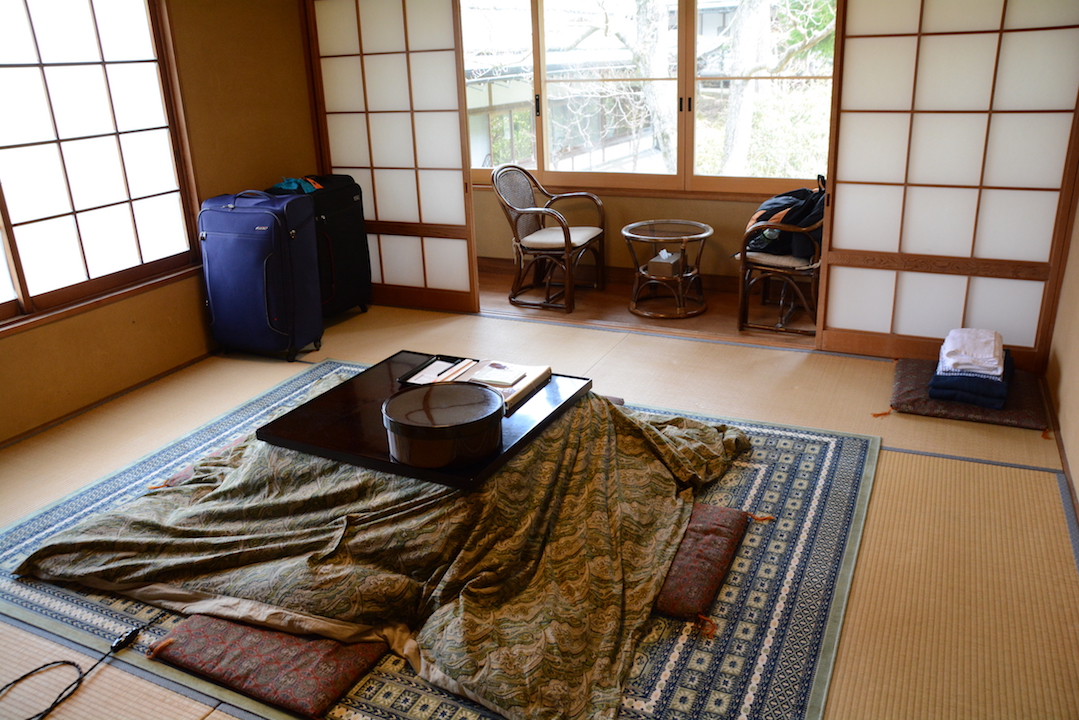
After checking in, we walked along the main street to find lunch. The temple lodging recommended an udon noodle shop across the road so we stopped in to try it. I love that Japanese cuisine comes with little side dishes that add a bit more variety to the meal.
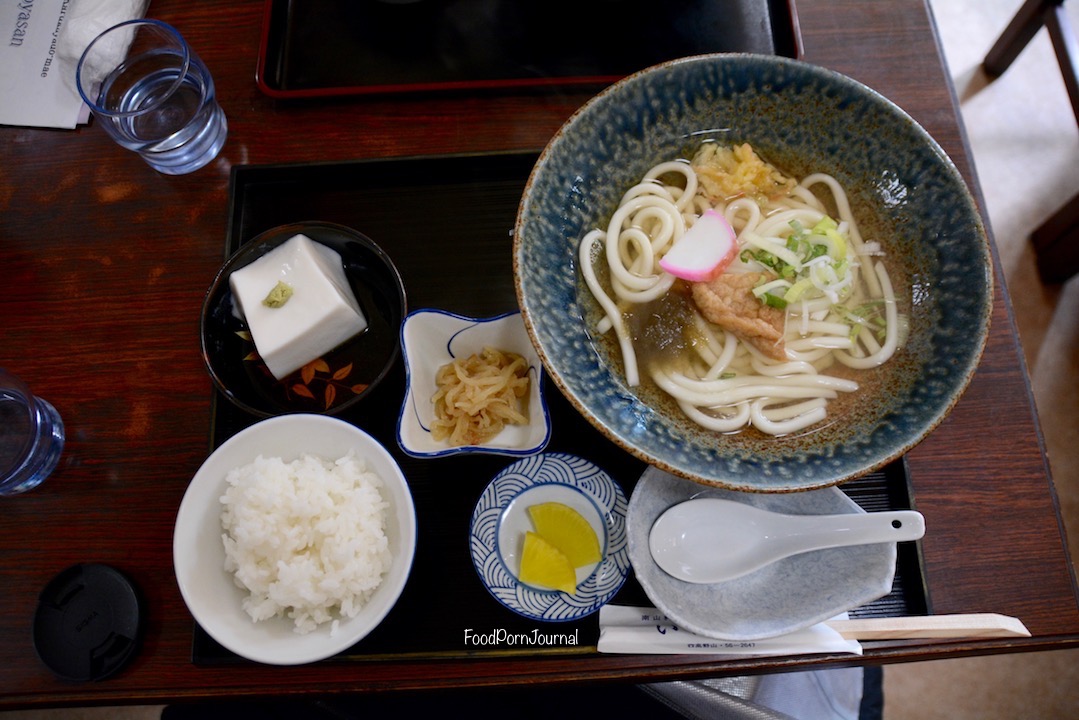
As our lodgings were pretty much smack bang in the middle of the main road in Koyasan, we decided to turn right on to the main road and walked to the end of the road to visit some temples and pagodas. Konpon Daito is a colourful pagoda, built in approx 876 and the tallest building in Koyasan. The pagoda was hit by lightning 5 times and has been rebuilt every time. I managed to capture a moment when the monks were walking and doing their daily prayers.
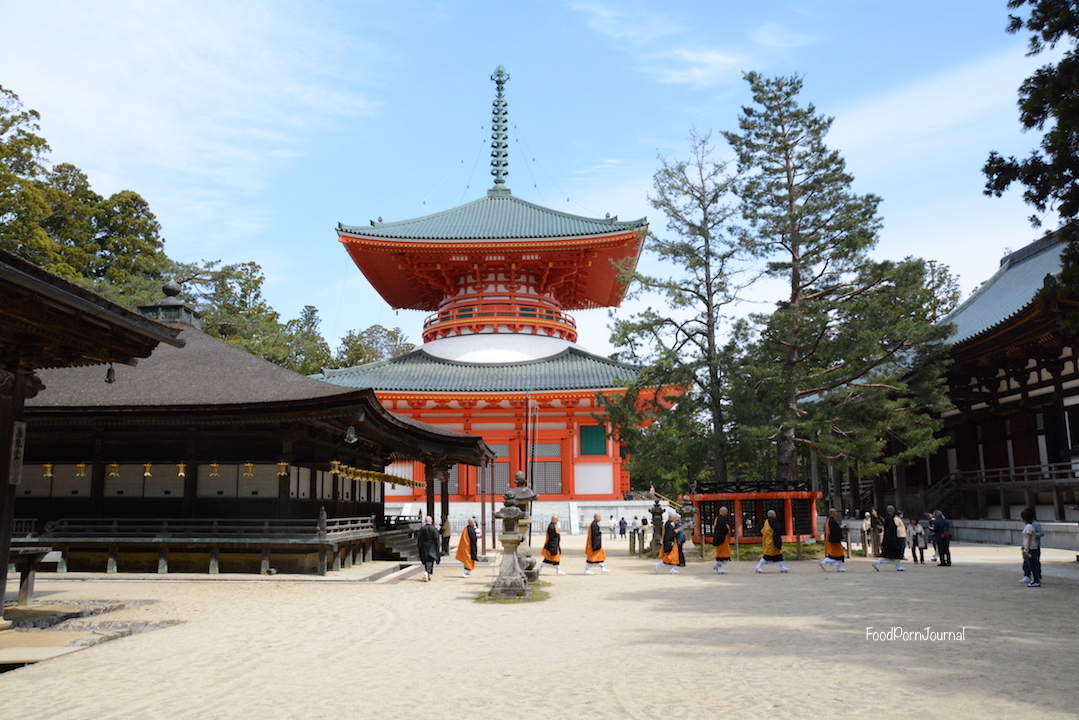
As we had reached the end of the main road, we turned around and headed back to cover the other end. I spotted some freshly made mochi being sold at one of the shops along the main street.
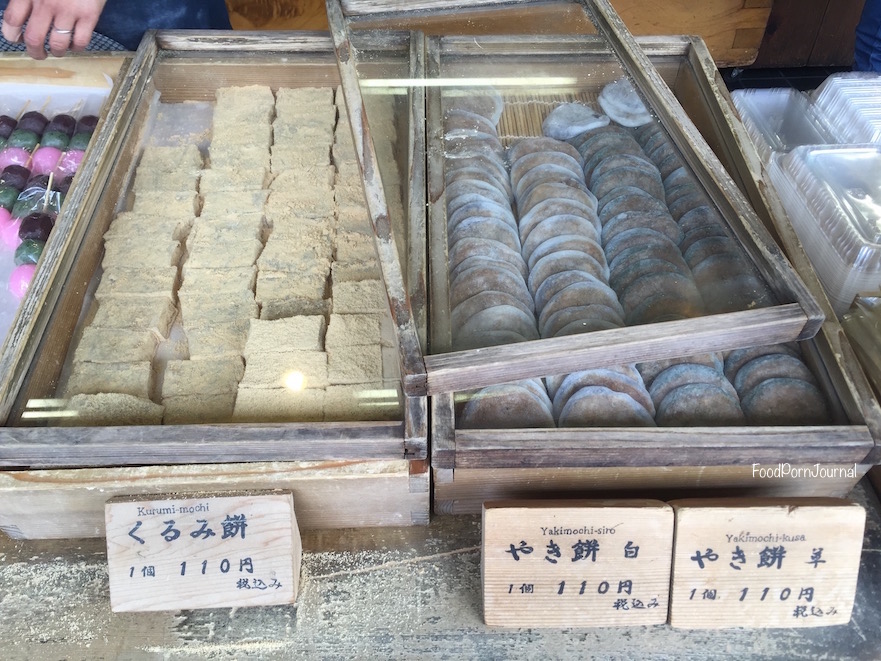
I tried the kurumi-mochi which had no filling but was dusted with a roasted soy bean flour giving it a nice nutty taste.
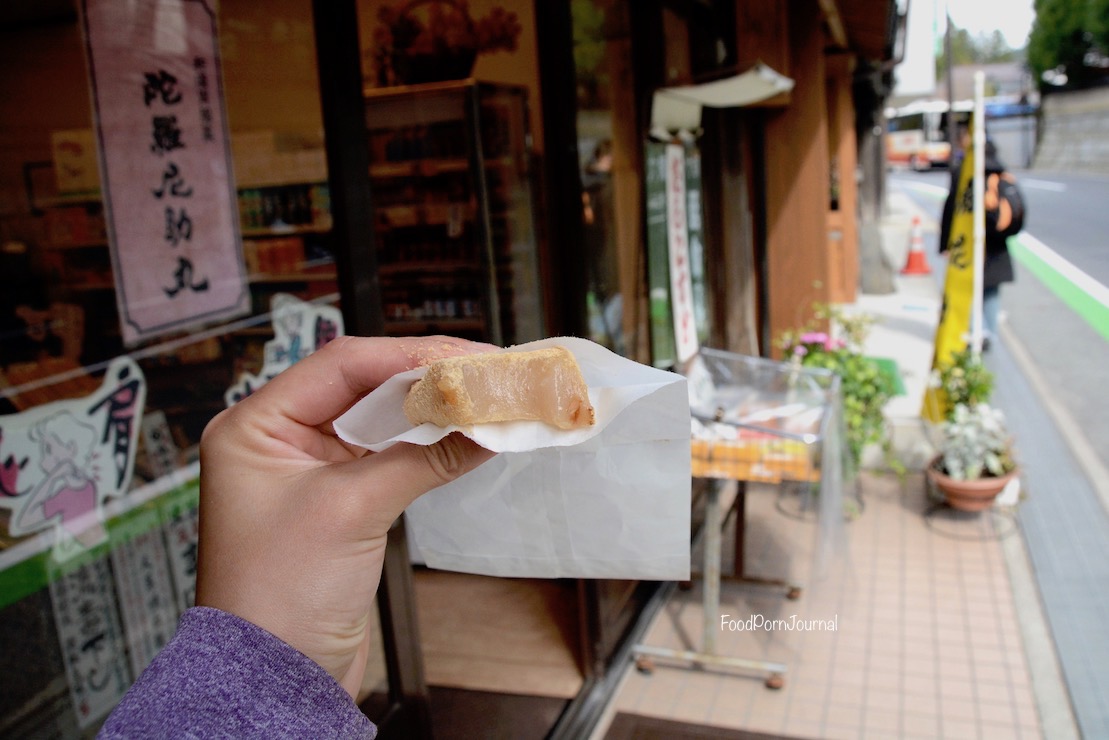
We walked through Okunoin, the largest cemetery in Japan. The 2km path led us to the mausoleum of Shingon Buddhism’s founder, Kobo Daishi.
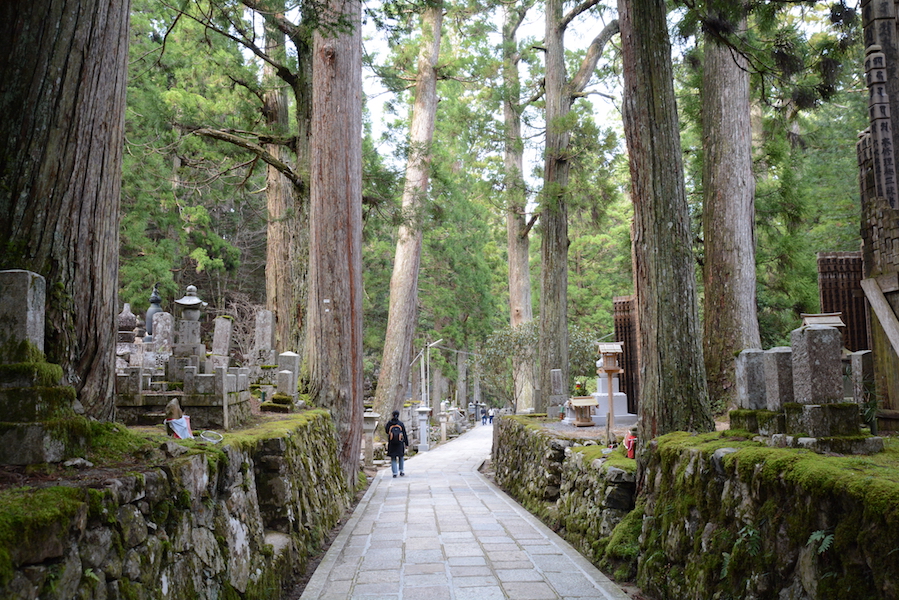
Walking amongst the towering 1,000 year old Japanese cedars and moss covered tombstones, there was so much serenity and sacredness. It was silent and a little eerie but very special.
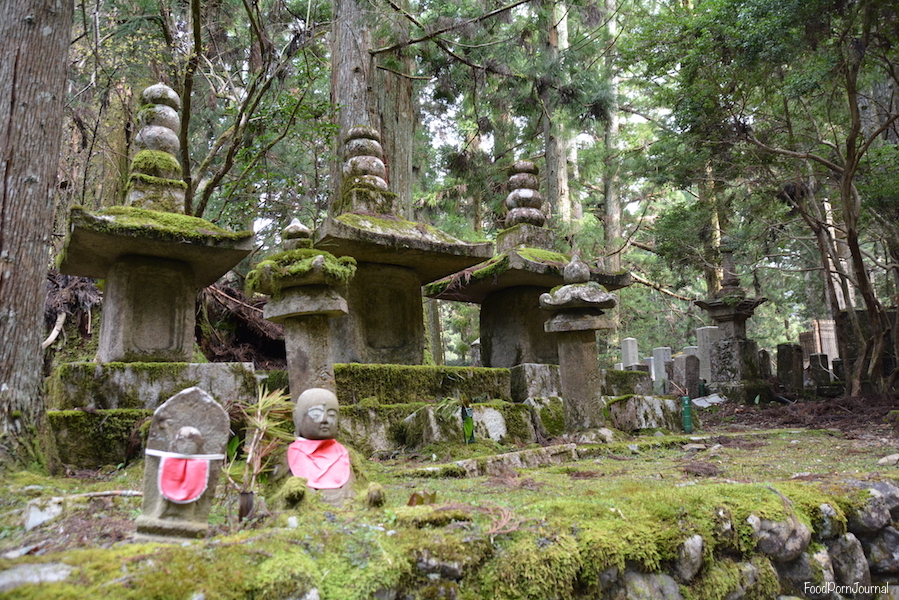
We passed by countless mini-statues of people wearing aprons, bibs and knitted beanies. The statues are of Jizo, the guardian of children, and the statues are placed there in memory of the death of a child, miscarriage, abortion etc. I’m not quite sure of the story/ritual behind this but there certainly were a lot of them. There were even a few pyramids of Jizo statues towards the end of the path.
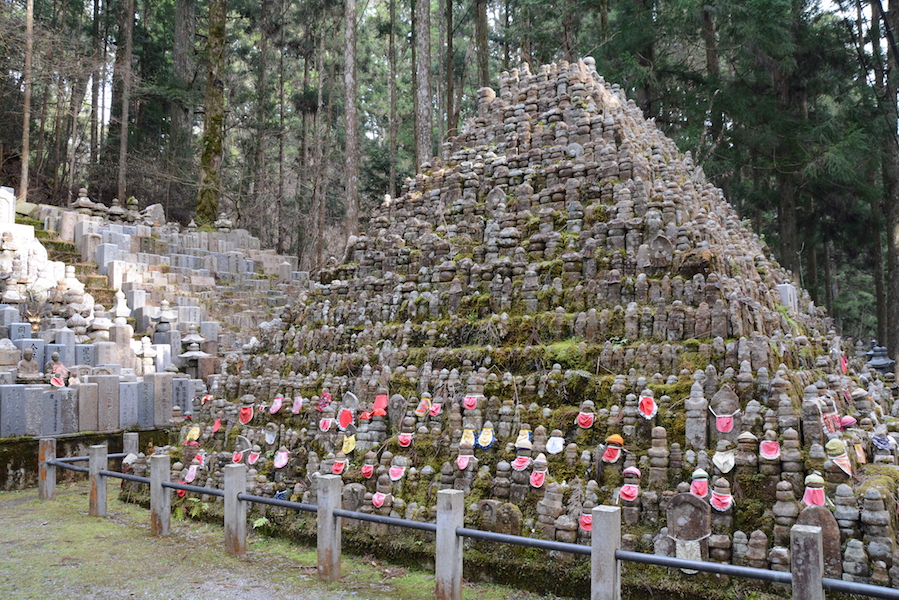
We passed by a monument dedicated to the soldiers of Japan and Australia who died in North Borneo in World War II. I loved the addition of the Aussie koala bears.
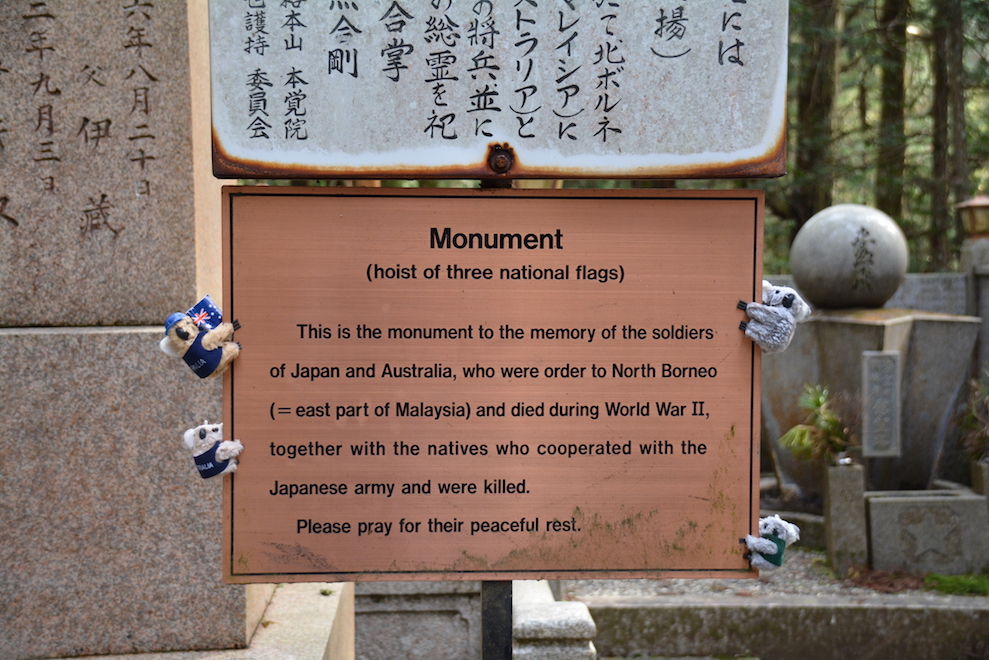
When we got back to Eko-in, dinner was ready and we were advised that it would be provided in our rooms. Everything was vegetarian and prepared by the Buddhist monks. We received miso soup, soba, pickled vegetables, tofu, tempura vegetables, a vegetable broth, rice, some melon for dessert and tea. Loved the variety.
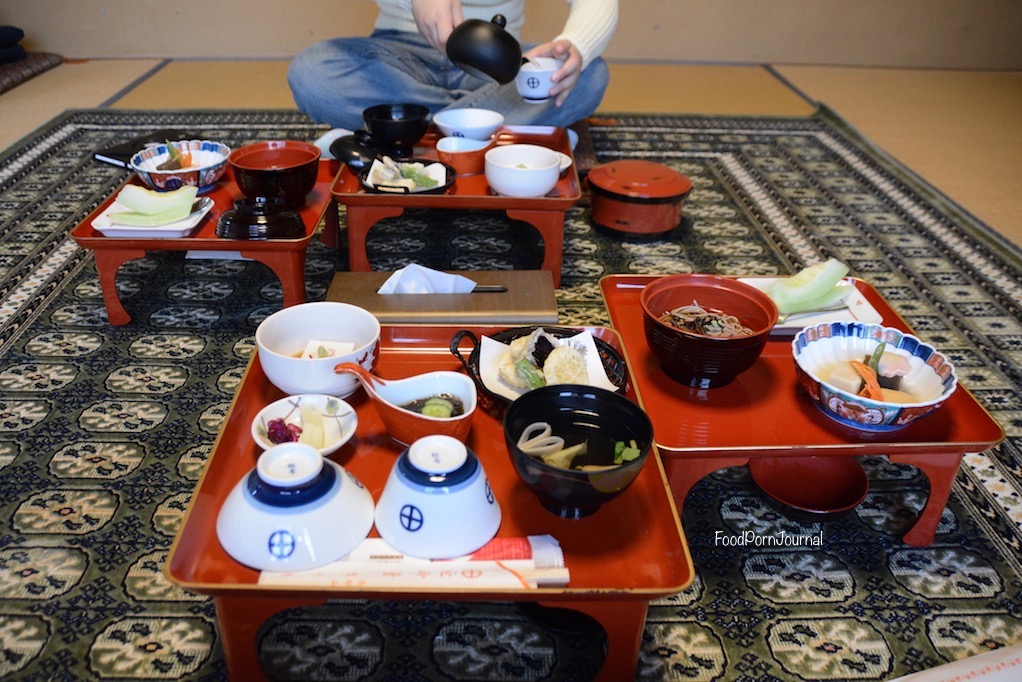
The following morning, I got up early to partake in the 6am fire ritual led by one of the monks. Much chanting and fire. Similarly with dinner, breakfast was served in our room. It was a simple breakfast of tofu, rice and nori, pickled vegetables and miso soup with tea.
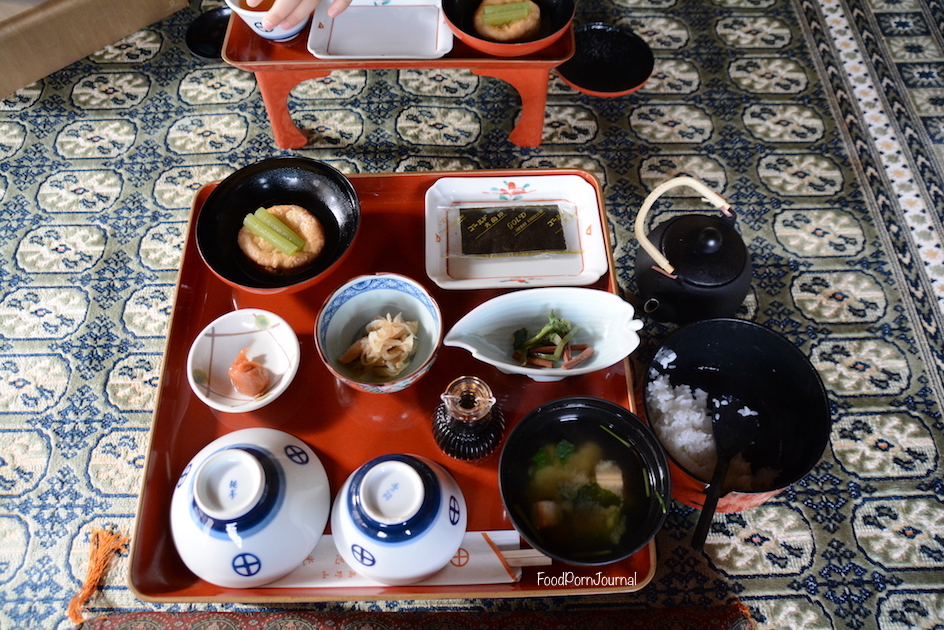
Mt Koya was a fantastic experience and if you have a night and day to spare, I’d recommend staying at one of the temples to fully appreciate the area.
Next, we travelled to Kyoto for a few nights…
If you want more random photos and updates about food, I’m on Facebook, Twitter and Instagram
Facebook: /foodpornjournal
Twitter: @foodpornjournal
Instagram: /foodpornjournal
